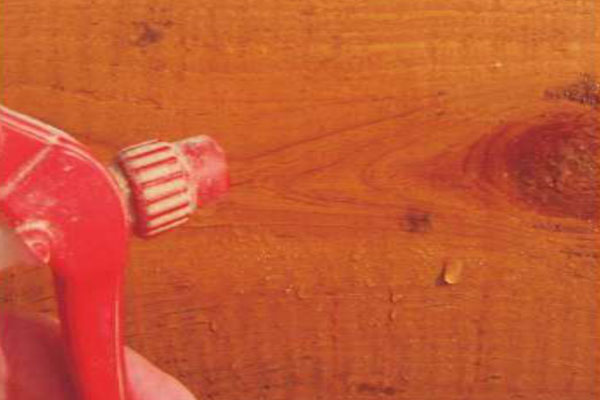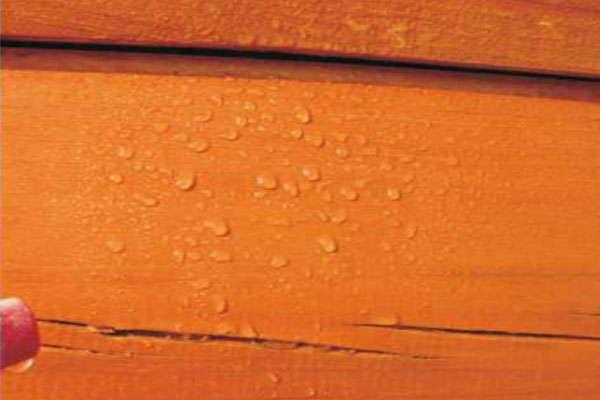We get calls from homeowners asking if they need to apply another coat of Advance on their home, since they’ve tested by spraying water on the finish and the water does not bead up. Since none of our current finishes contain oil or paraffin wax, they “sheet” water - but do not “bead” water. Why don't we add wax to our finishes? Wax may contribute to water repellency for the short term, but it weathers away fairly quickly, especially in areas that are in direct sunlight. Once it is gone, it leaves microscopic voids that may allow water penetration, and roughens the finish, making it not as easy to keep clean.
 By maintaining a wax-free smooth polymer film, we've been able to significantly increase the long-term performance of our exterior finish systems. Finishes containing wax also increase the difficulty of applying additional coats or applying a water-based finish on top of the wax finish.
By maintaining a wax-free smooth polymer film, we've been able to significantly increase the long-term performance of our exterior finish systems. Finishes containing wax also increase the difficulty of applying additional coats or applying a water-based finish on top of the wax finish.
There is also a misconception that only the topcoat imparts water repellency to our finish system. The fact is that all of our exterior and interior primers, stains, and topcoats prevent liquid water from coming in direct contact with the wood fibers. So even though the topcoat may show some signs of wear, it does not mean that the finish system has lost the ability to prevent water penetration.
So how can you tell if a finish no longer repels water? If the wood is dry it is pretty easy. When dry wood is sprayed with water and there is no change in color, it is a sign that the wood is not getting wet. On the other hand, if the wood turns dark it's an indication that the wood fibers are getting wet and the finish is no longer water repellent.

 A fallacy that many people have accepted as fact is that water beading on the surface of wood is the only sign that a finish is repelling water and beading water is an attribute of a quality finish. Nothing could be further from the truth. Beading water is only an indication of the presence of a hydrophobic additive (water-hating or repelling water) like oil, or more commonly, paraffin wax. In addition, there is no correlation between beading water and protecting wood from sun (UV) damage. Furthermore, water beading holds water closer to the finish for a longer period of time, thus increasing the chance of softening the film.
A fallacy that many people have accepted as fact is that water beading on the surface of wood is the only sign that a finish is repelling water and beading water is an attribute of a quality finish. Nothing could be further from the truth. Beading water is only an indication of the presence of a hydrophobic additive (water-hating or repelling water) like oil, or more commonly, paraffin wax. In addition, there is no correlation between beading water and protecting wood from sun (UV) damage. Furthermore, water beading holds water closer to the finish for a longer period of time, thus increasing the chance of softening the film.